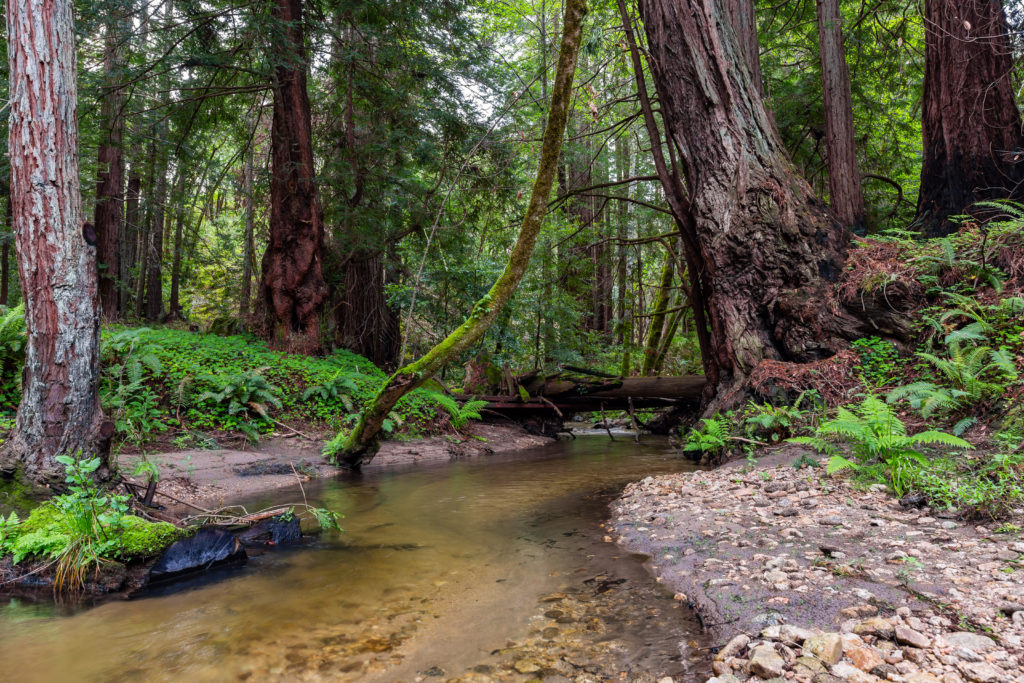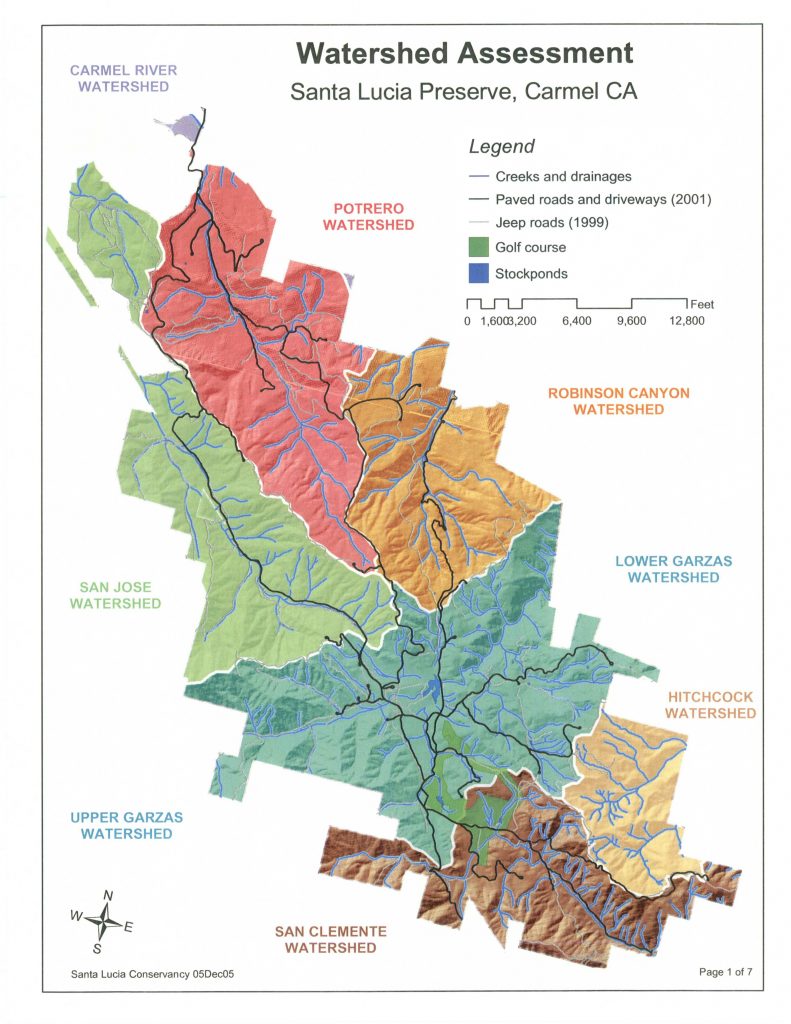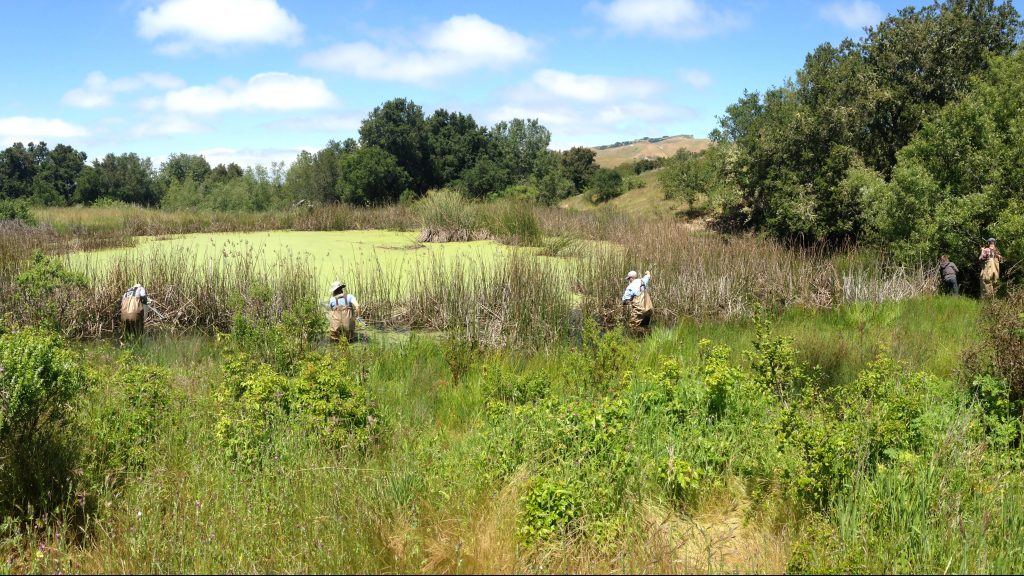
Streams and Wetlands
Streams and Creeks
The Preserve contains a number of perennial streams lined with willow and cottonwood-dominated riparian forests, as well as wetlands, lakes, and old cattle stockponds which serve as surrogate vernal pool habitats. Streams and wetlands are a vital part of any landscape. Rivers deliver vitality and nourish species that live in and near them, which in turn contribute to complex food webs. By definition, wetlands are lands that are partially or seasonally submerged in water. Wetlands appear in many forms around the Preserve; natural drainage areas, river beds, floodplains, and ponds are all different manifestations of wetlands found here. On the Santa Lucia Preserve, riparian zones and wetlands serve as wildlife corridors for native species, provide flood, erosion, and temperature regulation, supply habitat to an astounding variety of plants and animals, and provide crucial support to surrounding ecosystems.
Most creeks on the Preserve are tributaries of the Carmel River, which originates in the Ventana Wilderness and runs 36 miles to the Pacific. For over a decade, the Conservancy has been monitoring creek flows to ensure water infrastructure is not impacting stream flows. We also work closely with neighboring property owners and natural resource agencies to address fish barriers such as dams and some bridges, as well as erosion issues that could threaten The Preserve’s creeks and fish populations.
These hydrological systems are important for a variety of species especially our native steelhead trout, California red-legged frogs and California tiger salamander. The riparian zone is noted for its productive soils and the plants and wildlife adapted to the timing of fluvial events including flooding, drought, sediment transport and channel movement. Native plants are vital to the health of riparian areas, not only for wildlife habitat, but to promote healthy ecological processes.
Rivers deliver vitality and nourish species that live in and near them, which in turn contribute to complex food webs. All creeks and their watersheds are critical to landscape function, ecological water supply, and overall vitality of ranch ecosystems. Each watershed and its associated biota are vulnerable to activities throughout the course of the system, not only in the immediate vicinity of possible impacts.
Ponds
In addition to perennial and ephemeral streams, thirty-six ponds occur across The Preserve. These augmented wetlands provide valuable habitat for many resident and migratory species that utilize the ponds for nesting and foraging habitat. Maintaining the health of these ponds, including managing vegetation, is important to help sensitive species remain extant on The Preserve.

